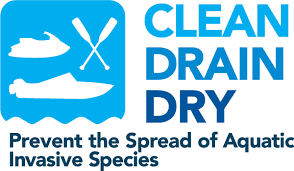Aquatic invasive species (AIS) are plants and animals not native to a water system that are introduced, sometimes inadvertently, into a new marine environment. They are threatening Minnesota waters.
The most common way AIS spreads is by watercraft moving from an infested lake to one with no invasives. Helping stop that spread is the task of the AIS inspectors you’ll meet at local landing sites.
AIS harm fish populations, water quality, and water recreation.
In Lake and Cook Counties, the respective Soil and Water Conservation Districts (SWCD) receive grants from the Minnesota Department of Natural Resources (DNR) to fund efforts to stop the introduction and limit the spread of AIS. The grant suggests activities that include oversight, management, county-wide public awareness, AIS monitoring, and ways to enhance compliance with Minnesota’s guidelines and rules to limit the spread of AIS.
Both counties maintain a robust team of DNR-trained Level 1 Watercraft Inspectors during the softwater season, looking to keep plants and other organisms confined to the waters where they originated. You’ll know them by the hi-vis vest and clipboard you’ll see when you come to the landing.
The DNR has three main goals for its invasive species program.
The first is to prevent the introduction of new invasive species into Minnesota waters.
Next, prevent the spread of invasive species within Minnesota.
Finally, reduce the ecological, societal, and economic impacts caused by invasive species (AIS). Once introduced, AIS can spread uncontrollably and harm native plants, wildlife, ecosystems, and human health. Preventing the spread of AIS or the introduction of new AIS is the most effective way to reduce the threat they pose.
Watercraft Inspections help prevent the spread of AIS by identifying potential invasives, ensuring water is drained before entering and when exiting lakes or rivers, and helping watercraft operators understand and practice effective protocols to prevent the transport of AIS.
When a DNR-trained inspector is on-site, whether launching or retrieving a boat, you will be asked to allow a visual and tactile inspection of your craft. In addition, the inspector will ask a handful of standardized questions to collect data that assists prevention efforts.
On July 15, 2024, the DNR published its updated list of infected waterways in the state. Although no new infestations have been identified in Lake and Cook Counties, Starry Stonewort was now confirmed in Pokegama (Itasca County), and Zebra mussels were confirmed in Leon (Otter Tail County) and Ringo (Kandiyohi County).
The DNR’s list of infested waters, which includes Minnesota lakes and rivers containing certain, but not all, aquatic invasive species, is available on its website. The DNR regularly updates the list.
Lake Superior and some inland lakes in the Arrowhead are home to the invasive spiny water flea (Bythotrephes longimanus). This tiny zooplankton drifts in freshwater bodies.
Native to Eurasia, the spiny water flea was introduced to North America in the Great Lakes through ballast water discharged from ships. Just visible to the naked eye, it has an elongated, translucent body with a single, prominent black eye. Its defining feature is a long, spiny, barbed tail.
Spiny waterfleas are voracious predators that feed on other zooplankton. Preying on other zooplankton, spiny waterfleas reduce the food source for small fish, leading to stunted growth and population decline. Spiny water fleas can clog fishing nets and lines, making fishing difficult. Their sharp spines can also irritate swimmers’ and boaters’ skin.
The Level 1 inspector helps the watercraft operator understand the importance of draining, drying, and cleaning any equipment that comes in contact with the water before the boat moves to a different body of water. Additional information about the AIS prevention program can be found at the SWCD portion of the Cook County website, www.co.cook.mn.us.



